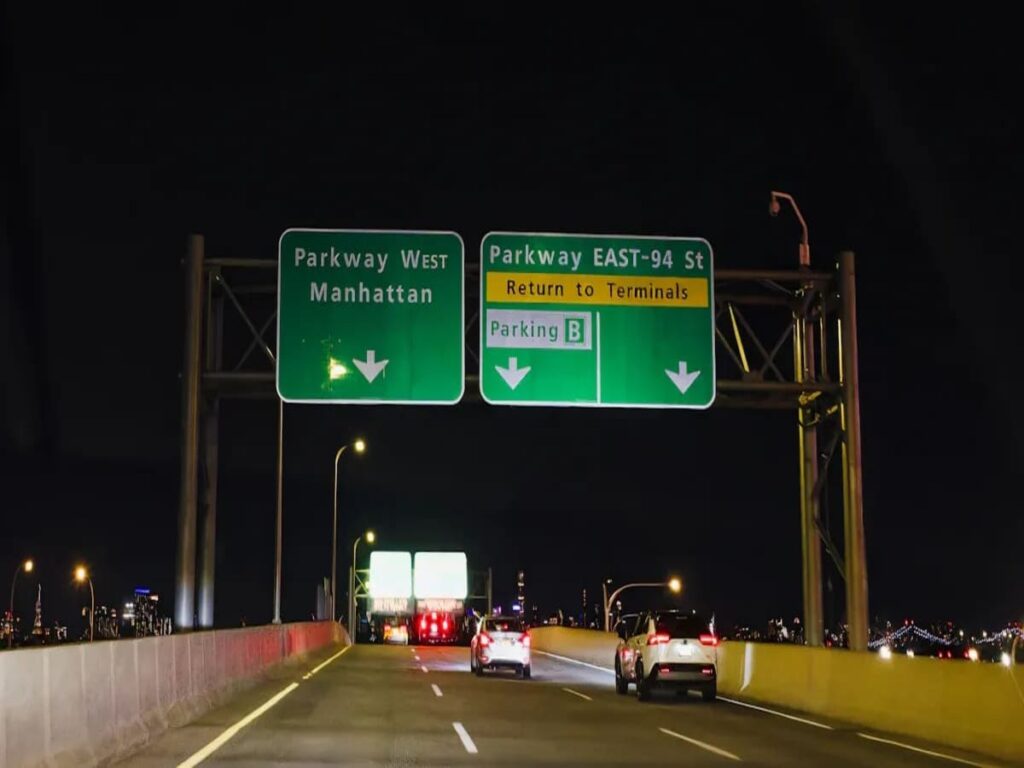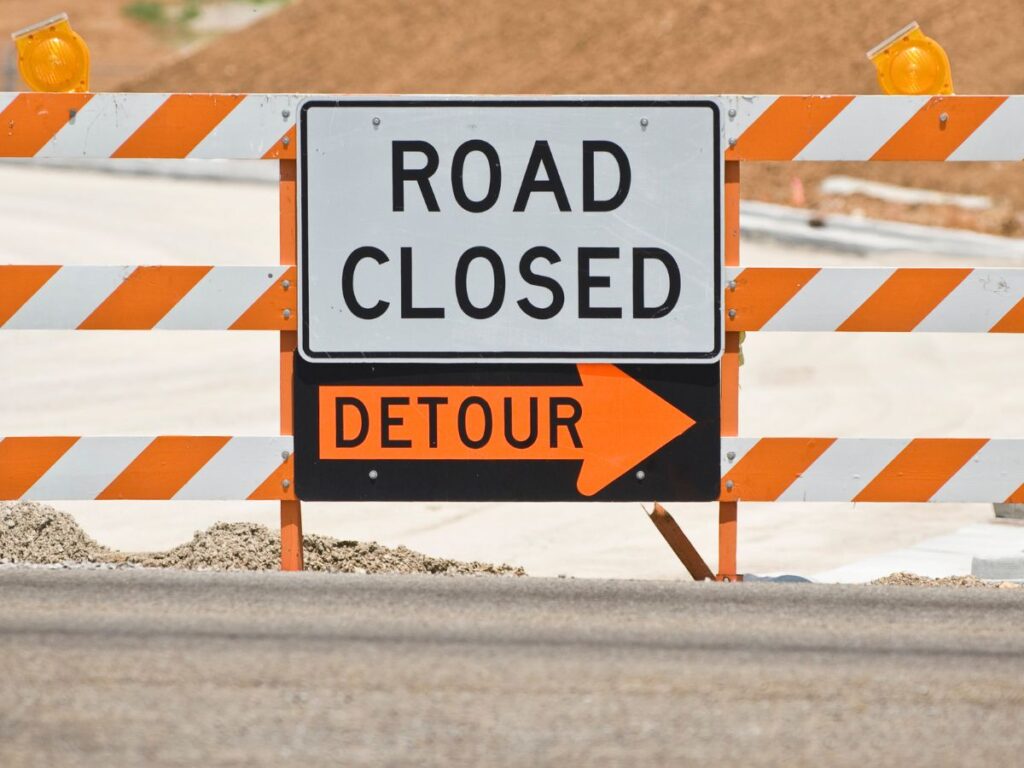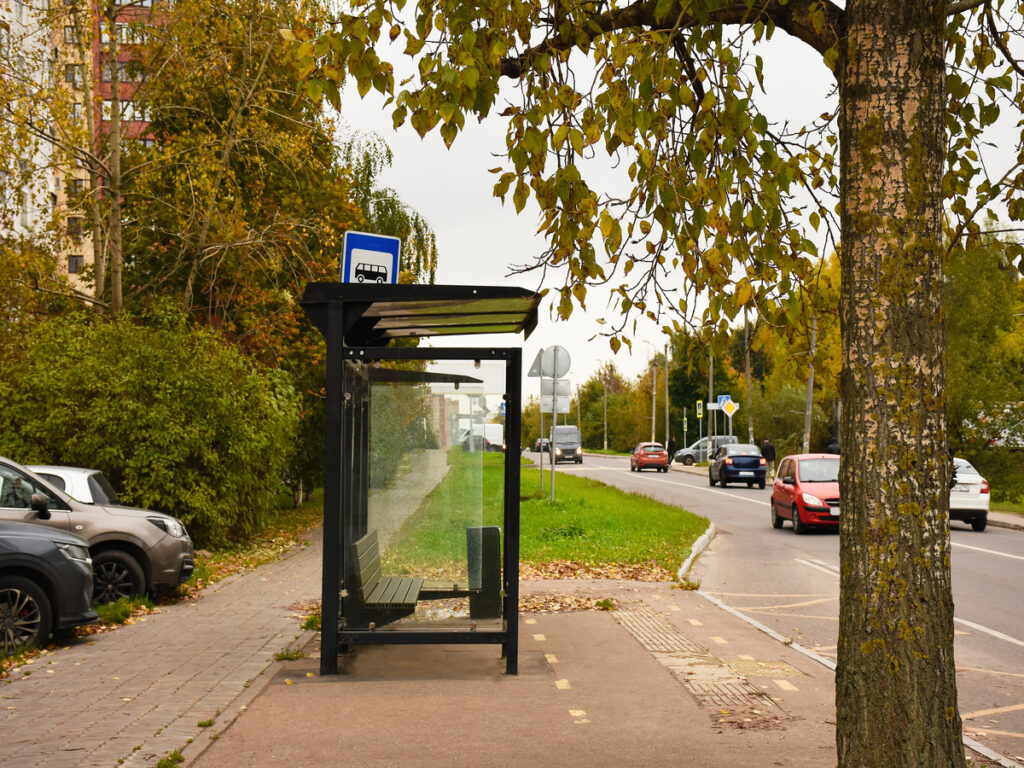
बाइक लेन डेलिनेटर्स शहरी क्षेत्रों में सुरक्षा और दक्षता बढ़ाने में योगदान करते हैं, शहरों को सुरक्षित और अधिक नौगम्य बनाना. बाइक लेन डिवाइडर स्पष्ट रूप से साइकिल चालकों को अलग करके इसे प्राप्त करते हैं, बस राइडर्स, और पैदल यात्री. ये उपकरण संघर्षों को कम करते हैं और बस स्टॉप पर यातायात प्रवाह को सुव्यवस्थित करते हैं. ब्रिटिश कोलंबिया में, जहां शहर सीमित स्थान और बढ़ते जैसी चुनौतियों का सामना करते हैं बहुमूत्र परिवहन उपयोग, डिवाइडर इन मुद्दों को प्रभावी ढंग से संबोधित करते हैं. वे सुरक्षा और दक्षता में सुधार करते हैं, यह सुनिश्चित करना कि हर कोई -साइकिल चालक, पैदल चलने वालों, और बस राइडर्स- रिक्त स्थान को मूल रूप से साझा कर सकते हैं.
ऑप्टट्रैफ़िक ऑफर बिक्री के लिए उच्च गुणवत्ता वाले डेलिनेटर्स, सुरक्षा और यातायात प्रवाह में सुधार के लिए डिज़ाइन किया गया. ऑप्ट्राफिक टिकाऊ और बहुमुखी लेन डिवाइडर परिवहन के विभिन्न तरीकों के बीच स्पष्ट पृथक्करण प्रदान करते हैं, एक चिकनी सुनिश्चित करना, सुरक्षित, और सभी सड़क उपयोगकर्ताओं के लिए अधिक कुशल अनुभव.
चाबी छीनना
- बाइक लेन डिवाइडर बस स्टॉप पर स्पष्ट स्थान बनाते हैं. यह साइकिल चालक रखता है, वॉकर, और बस सवार सुरक्षित.
- इन बाधाओं को जोड़ने से क्रैश और तर्क कम हो जाते हैं. यह साझा क्षेत्रों को सुरक्षित और उपयोग करने में आसान बनाता है.
- स्मार्ट डिजाइन सभी की मदद करते हैं, यहां तक कि लोग व्हीलचेयर या वॉकर का उपयोग कर रहे हैं. यह सभी का उपयोग करने के लिए बस स्टॉप आसान बनाता है.
- शहर बाइकिंग और बसों को बेहतर बनाकर हरी यात्रा का समर्थन कर सकते हैं. अच्छी बाइक लेन डिजाइन इस के साथ मदद करते हैं.
- समुदाय से बात करना महत्वपूर्ण है. स्थानीय लोगों से पूछने से बाइक लेन डिवाइडर को उपयोगी बनाने में मदद मिलती है और शहर की यात्रा में सुधार होता है.
स्पष्ट सीमाओं के बिना बस स्टॉप पर चुनौतियां
साइकिल चालकों और पैदल चलने वालों के लिए सुरक्षा समस्याएं
स्पष्ट सीमाओं के बिना, बस स्टॉप खतरनाक स्थान हो सकते हैं. साइकिल चालक अक्सर बसों के साथ सड़कों को साझा करते हैं, जो समस्याएं पैदा कर सकते हैं. बसों तक पहुंचने के लिए बाइक लेन को पार करने वाले पैदल यात्री भी जोखिम का सामना करते हैं. भारी यातायात के साथ व्यस्त समय के दौरान ये खतरे खराब हो जाते हैं. लापता या अस्पष्ट बाइक लेन मार्कर लोगों को दुर्घटनाओं के जोखिम में छोड़ देते हैं. इन मुद्दों को ठीक करने से बस स्टॉप सभी के लिए सुरक्षित हो सकते हैं.
साइकिल चालकों और बस सवारों के बीच समस्याएं
बाइक लेन के पास बस स्टॉप अक्सर भ्रम और समस्याओं का कारण बनता है. साइकिल चालक गलती से बस क्षेत्रों में सवारी कर सकते हैं, यात्रियों को भ्रमित करना. बसों से उतरने वाले यात्री साइकिल चालकों के रास्ते में कदम रख सकते हैं. यह मिक्स-अप साइकिल और बस सिस्टम दोनों को बाधित करता है. स्पष्ट सीमाएं प्रत्येक समूह के लिए रिक्त स्थान को अलग करके मदद कर सकती हैं.
ब्रिटिश कोलंबिया शहरों में अंतरिक्ष चुनौतियां
ब्रिटिश कोलंबिया के शहरों में अद्वितीय अंतरिक्ष समस्याएं हैं. भीड़ भरे शहर के केंद्र बाइक लेन को फिट करना मुश्किल बनाते हैं, बस स्टॉप, और वॉकवेज़. कुछ बस स्टॉप को बसों तक पहुंचने के लिए लोगों को बाइक लेन पार करने की आवश्यकता होती है, चुनौती में जोड़ना. साइक्लिंग इन्फ्रास्ट्रक्चर से सटे बस स्टॉप के लिए डिज़ाइन गाइड इन मुद्दों की व्याख्या करता है. उदाहरण के लिए, बीसी अदालत ने कहा कि इस तरह के डिजाइन विकलांग लोगों के लिए अनुचित थे. इन समस्याओं को हल करके, शहर बस स्टॉप को सुरक्षित और सभी के लिए अधिक कुशल बना सकते हैं.
बाइक लेन डेलिनेटर्स के साथ सुरक्षा और दक्षता बढ़ाना
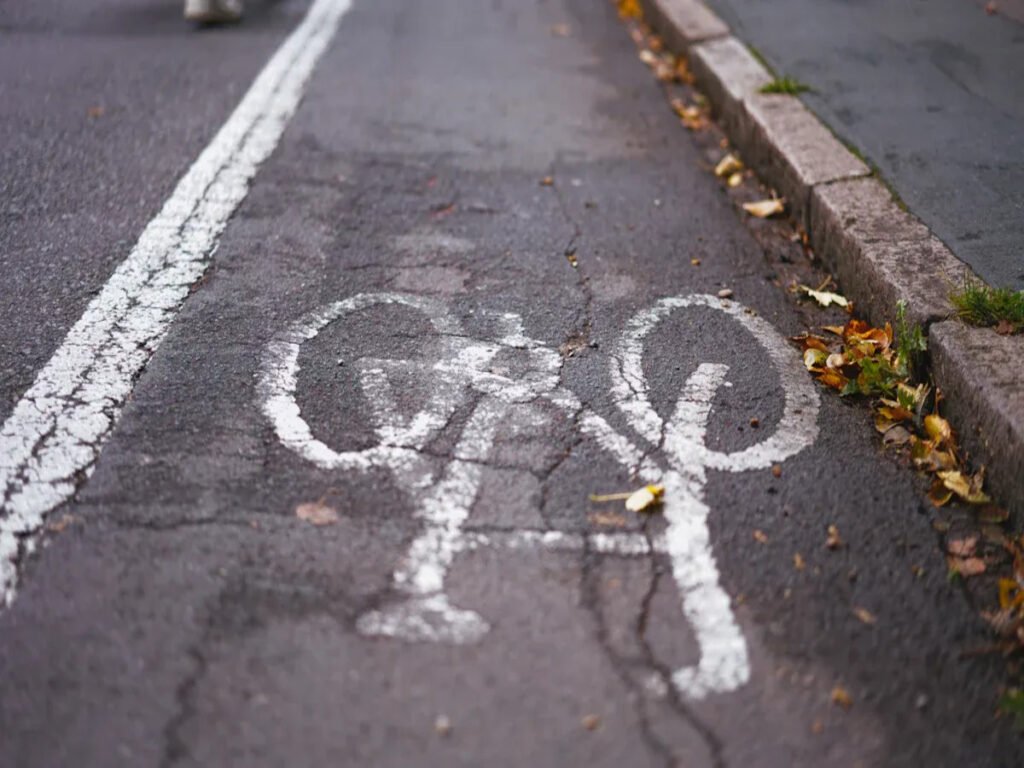
ट्रैफ़िक मोड का स्पष्ट पृथक्करण
बाइक लेन डिवाइडर साइकिल चालकों को रखने में मदद करते हैं, वॉकर, और बस सवार अलग. वे प्रत्येक समूह के लिए स्पष्ट स्थान बनाते हैं, भ्रम को कम करना. यह यातायात प्रवाह को चिकना और सभी के लिए सुरक्षित बनाता है. उदाहरण के लिए, फ्लोटिंग बस स्टॉप और पार्किंग-संरक्षित बाइक लेन इन डिवाइडर का उपयोग करें.
| परियोजना विवरण | विशेषताएँ |
|---|---|
| फ्लोटिंग बस स्टॉप | साइकिल चालकों और बसों को अलग रखता है, बस स्टॉप बनाना सुरक्षित. |
| पार्किंग-संरक्षित बाइक लेन | बाइक और कारों के बीच एक बाधा जोड़ता है, साइकिल चालकों की रक्षा करना. |
ये डिज़ाइन शहरों को नेविगेट करने और सभी के लिए सुरक्षित बनाने के लिए आसान बनाते हैं. स्पष्ट डिवाइडर के साथ एक बस स्टॉप पर, आप जानते हैं कि कहां चलना है, बाइक, या इंतज़ार करें. यह दुर्घटनाओं को कम करता है और सभी के लिए अंतरिक्ष को सरल बनाने का उपयोग करता है.
दुर्घटनाओं और संघर्षों को कम करना
डिवाइडर बस स्टॉप पर दुर्घटनाओं और समस्याओं की संभावना को कम करते हैं. वे साइकिल चालकों को बस ज़ोन में प्रवेश करने से रोकते हैं और बाइक पथों को पार करने वाले वॉकरों की रक्षा करते हैं. अध्ययन से पता चलता है कि भौतिक डिवाइडर चित्रित लाइनों की तुलना में बेहतर काम करते हैं. वे कारों को धीमा कर देते हैं और क्षेत्रों को सुरक्षित बनाते हैं.
| लेन का प्रकार | सही मोड़ के लिए गति में कमी | औसत गति में कमी | समग्र प्रभावशीलता |
|---|---|---|---|
| भौतिक कार्यकर्ता | 28% | 21% | अधिक प्रभावी |
| चित्रित रेखाएँ | तक 14% | तक 8% | कम प्रभावी |
ये संख्या दिखाती है कि सुरक्षा के लिए डिवाइडर कितने महत्वपूर्ण हैं. वे बस स्टॉप के पास कारों को धीमा कर देते हैं और साइकिल चालकों और वॉकरों की रक्षा करते हैं. यह साझा स्थानों को सुरक्षित और उपयोग करने में आसान बनाता है.
सभी उपयोगकर्ताओं के लिए पहुंच में सुधार
बाइक लेन डिवाइडर भी लोगों को बस स्टॉप के चारों ओर अधिक आसानी से घूमने में मदद करते हैं. वे स्पष्ट रूप से क्षेत्रों को चिह्नित करते हैं, गतिशीलता के साथ उन लोगों की मदद करना भ्रम से बचने के लिए. अनुसंधान से पता चलता है कि बेहतर बस स्टॉप डिजाइन पहुंच में सुधार करते हैं:
- अधिक क्षेत्र थोड़े समय के भीतर पहुंच योग्य हैं, पारगमन का उपयोग करना आसान है.
- के बारे में 53.5% चलने से पांच मिनट के भीतर स्थानों तक पहुंचा जा सकता है.
- क्षेत्रों 400 मीटर दूर पहुंचने में पांच मिनट लगते हैं, जबकि 800 मीटर दस ले.
अच्छे डिवाइडर के साथ बस स्टॉप पर, घूमना सरल लगता है. चाहे बाइक चलाना, चलना, या बस का इंतजार कर रहे हैं, ये विशेषताएं अंतरिक्ष को सुरक्षित और सभी के लिए अधिक कुशल बनाती हैं.
ब्रिटिश कोलंबिया से केस स्टडी और उदाहरण
बाइक लेन डिवाइडर के साथ वैंकूवर की सफलता
वैंकूवर सिटी प्लानिंग में बाइक लेन डिवाइडर का उपयोग करता है. सुरक्षा में सुधार के लिए इन डिवाइडर को बस स्टॉप पर रखा गया है. एक उदाहरण चालू है वाणिज्यिक अभियान, जहां फ्लोटिंग बस स्टॉप और संरक्षित बाइक लेन जोड़े गए थे. साइकिल चालकों, पैदल चलने वालों, और बस सवारों के पास अब अलग -अलग स्थान हैं. यह भ्रम को कम करता है और यातायात प्रवाह को बेहतर बनाता है.
साइकिल चालक बसों या वॉकरों को चकमा दिए बिना अपनी गलियों का उपयोग करते हैं. बस यात्री बाइक के बारे में चिंता किए बिना बसों पर सुरक्षित रूप से और बंद हो सकते हैं. पैदल यात्री स्पष्ट रास्तों का पालन करते हैं जो उन्हें बाइक लेन से दूर रखते हैं. वैंकूवर दिखाता है कि डिवाइडर के साथ स्मार्ट प्लानिंग शहरों को सुरक्षित और नेविगेट करने में आसान बना सकती है.
बाइक लेन डिवाइडर का उपयोग करने वाले छोटे शहर
ब्रिटिश कोलंबिया में छोटे शहर भी बाइक लेन डिवाइडर का उपयोग सफलतापूर्वक करते हैं. केलोना ने डाउनटाउन बस स्टॉप के पास सुरक्षा समस्याओं को ठीक करने के लिए डिवाइडर को जोड़ा. शहर के छोटे आकार ने बाइक लेन और बस स्टॉप को फिट करना मुश्किल बना दिया. लचीले डिवाइडर ने सभी के लिए साझा स्थान बनाने में मदद की.
इन क्षेत्रों में, डिवाइडर साइकिल चालकों का मार्गदर्शन करते हैं और बस ज़ोन को साफ रखते हैं. यह भ्रम को कम करता है और ट्रैफ़िक को सुचारू रूप से आगे बढ़ाता है. केलोना साबित करता है कि छोटे शहर भी सरल उपकरणों के साथ सुरक्षा में सुधार कर सकते हैं. एक बड़ा प्रभाव बनाने के लिए बाइक लेन डिवाइडर को बड़े बजट की आवश्यकता नहीं है.
बेहतर बस स्टॉप के लिए प्रांतीय दिशानिर्देश
ब्रिटिश कोलंबिया के दिशानिर्देश बताएं कि बाइक लेन डिवाइडर का अच्छी तरह से उपयोग कैसे करें. वे साइकिल चालकों को अलग करने पर जोर देते हैं, वॉकर, और बस स्टॉप पर बस सवार. डिवाइडर जैसी शारीरिक बाधाएं प्रत्येक समूह के लिए स्पष्ट स्थान बनाती हैं.
इन दिशानिर्देशों का सुझाव है कि बस ज़ोन से साइकिल चालकों को ब्लॉक करने के लिए डिवाइडर रखने का सुझाव दें. वे उन रास्तों की भी सलाह देते हैं जो विकलांग लोगों के लिए काम करते हैं. इन नियमों का पालन करने से बस स्टॉप को डिजाइन करने में मदद मिलती है जो सुरक्षित और उपयोग में आसान हैं. सुरक्षा और दक्षता में सुधार करते हुए समुदाय सभी की जरूरतों को पूरा कर सकते हैं.
शहरी गतिशीलता के लिए व्यापक लाभ
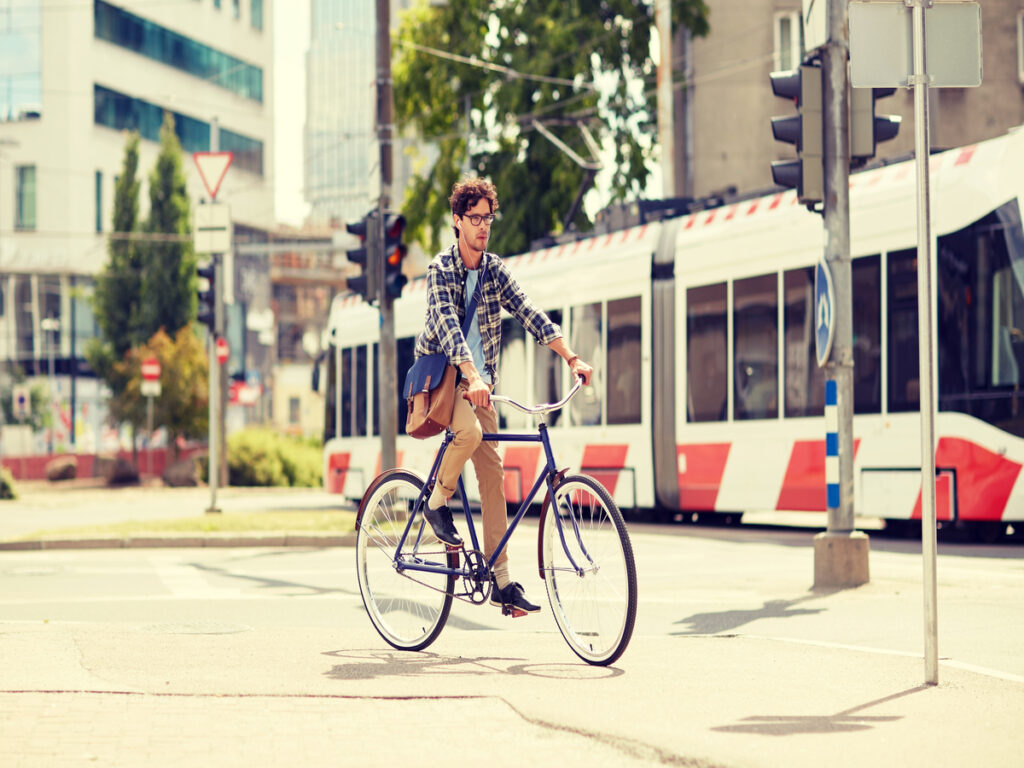
टिकाऊ परिवहन को बढ़ावा देना
बाइक लेन डेलिनेटर्स शहरों को अधिक पर्यावरण के अनुकूल बनने में मदद करते हैं. वे बस स्टॉप से बाइक लेन को अलग करते हैं, बाइकिंग सुरक्षित बनाना. यह कारों को चलाने के बजाय लोगों को बाइक चलाने के लिए प्रोत्साहित करता है. सवारी बाइक हानिकारक गैसों को कम करती है और हवा को साफ रखती है. ब्रिटिश कोलंबिया के शहर पहले से ही इन सकारात्मक परिवर्तनों को देखते हैं. बेहतर बाइक पथों के साथ, कम कारें सड़कों पर हैं. इसका मतलब है कम प्रदूषण और सभी के लिए एक स्वस्थ जगह.
बख्शीश: बाइक या सार्वजनिक पारगमन का उपयोग करने के लिए चुनने से ग्रह हरे रहने में मदद मिलती है.
साइकिल चलाना और पारगमन उपयोग को प्रोत्साहित करना
अच्छी बाइक लेन और बस स्टॉप लोगों को सुरक्षित महसूस कराते हैं. बाइक लेन डेलिनेटर्स कम दुर्घटना जोखिम, इसलिए बाइक चलाना आसान लगता है. यह आप अपनी बाइक को अधिक बार सवारी करना चाहते हैं, व्यस्त क्षेत्रों में भी. स्पष्ट बस स्टॉप डिजाइन भी सार्वजनिक पारगमन को बेहतर बनाते हैं. आप अपने रास्ते में बाइक के बारे में चिंता किए बिना बसों पर जा सकते हैं. ये परिवर्तन सभी के लिए बाइकिंग और पारगमन को चिकना बनाते हैं.
- बेहतर डिजाइनों के लाभ:
- वॉकर और साइकिल चालकों के लिए सुरक्षित क्षेत्र.
- बसों और ट्रेनों का उपयोग करने वाले अधिक लोग.
- व्यस्त समय के दौरान कम यातायात.
दीर्घकालिक शहरी विकास का समर्थन करना
बढ़ते शहरों को स्मार्ट परिवहन योजनाओं की आवश्यकता होती है. बाइक लेन डेलिनेटर्स योजनाकारों को सभी के लिए सुरक्षित स्थान बनाने में मदद करते हैं. साइकिल चालकों, वॉकर, और बस सवार समस्याओं के बिना क्षेत्रों को साझा कर सकते हैं. यह योजना शहरों को एक तरह से बढ़ने में मदद करती है जो सभी के लिए काम करती है. जब परिवहन सुरक्षित और आसान है, लोग शहरों में रहते हैं और उन्हें पनपने में मदद करते हैं.
टिप्पणी: बाइक लेन डेलिनेटर्स को जोड़ना अब भविष्य के लिए मजबूत शहर बनाता है.
कार्यान्वयन के लिए सिफारिशें
शहरी योजनाकारों के लिए सर्वोत्तम अभ्यास
शहरी योजनाकार परिवहन को सुरक्षित और उपयोग करने में आसान बनाने में मदद करते हैं. जमा करना बाइक लेन डेलिनेटर्स बस स्टॉप के पास, इन सरल युक्तियों का पालन करें:
- अंतरिक्ष का सबसे अच्छा उपयोग करें: छोटे स्थानों में सब कुछ फिट करने के लिए स्मार्ट डिजाइनों का उपयोग करें. साइकिल चालकों को रखने के लिए फ्लोटिंग बस स्टॉप या पार्किंग-संरक्षित बाइक लेन का प्रयास करें, वॉकर, और बस सवार अलग.
- लचीले डिजाइनों का उपयोग करें: चुनना बाइक लेन डेलिनेटर्स जो शहर की जरूरतों के साथ बदल सकता है. मॉड्यूलर डिज़ाइन आपको ट्रैफ़िक परिवर्तन या शहर बढ़ने के साथ समायोजित करते हैं.
- सभी के लिए डिजाइन: सुनिश्चित करें कि सभी लोग, जिनमें विकलांग लोग भी शामिल हैं, अंतरिक्ष का उपयोग कर सकते हैं. सभी को सुरक्षित रूप से स्थानांतरित करने में मदद करने के लिए स्पष्ट संकेत और स्पर्श मार्कर जोड़ें.
- डेटा का उपयोग करके योजना बनाएं: खतरनाक स्पॉट खोजने के लिए ट्रैफ़िक डेटा देखें. जोड़ते समय पहले इन क्षेत्रों पर ध्यान दें बाइक लेन डेलिनेटर्स. यह सुनिश्चित करता है कि संसाधनों का उपयोग बुद्धिमानी से किया जाता है.
इन चरणों का पालन करके, शहरी योजनाकार सभी के लिए सुरक्षित और अधिक कुशल परिवहन प्रणाली बना सकते हैं.
स्थानीय सरकारों के लिए नीतिगत सिफारिशें
स्थानीय सरकारें समर्थन के लिए नियम बना सकती हैं बाइक लेन डेलिनेटर्स. यहाँ मदद करने के लिए कुछ विचार हैं:
- स्पष्ट नियम निर्धारित करें: जोड़ने के लिए दिशानिर्देश बनाएं और उनका पालन करें बाइक लेन डेलिनेटर्स. इन नियमों को प्रांतीय मानकों से मेल खाना चाहिए और ट्रैफ़िक प्रकारों को अलग करने पर ध्यान देना चाहिए.
- पैसे और पुरस्कार प्रदान करें: इन समाधानों का उपयोग करने वाले परियोजनाओं और इनाम समुदायों के लिए धन प्रदान करें. यह प्रक्रिया को गति देने और रचनात्मकता को प्रोत्साहित करने में मदद करता है.
- एक साथ काम करो: अलग -अलग विभाग प्राप्त करें, परिवहन और सार्वजनिक कार्यों की तरह, टीम बनाने के लिए. एक साथ काम करना इसमें शामिल करना आसान हो जाता है बाइक लेन डेलिनेटर्स शहर की योजनाओं में.
- परिणाम की जाँच करें: ट्रैक कैसे बाइक लेन डेलिनेटर्स सुरक्षा और यातायात में सुधार करें. भविष्य में बेहतर नीतियां बनाने के लिए इस जानकारी का उपयोग करें.
इन विचारों का उपयोग करके, स्थानीय सरकारें सुरक्षित शहर बना सकती हैं और पर्यावरण के अनुकूल परिवहन का समर्थन कर सकती हैं.
सामुदायिक सगाई रणनीतियाँ
समुदाय को शामिल करना बनाने के लिए महत्वपूर्ण है बाइक लेन डेलिनेटर्स काम. जब लोग अपने विचार साझा करते हैं, समाधान उनकी जरूरतों को बेहतर ढंग से पूरा कर सकते हैं. इन विधियों को आज़माएं:
| सगाई पद्धति | उद्देश्य |
|---|---|
| लोक कार्यशालाएँ | विचारों को सुनें और बातचीत शुरू करें |
| संकेन्द्रित समूह | निवासियों को योजना के साथ मदद करने दें |
| सर्वेक्षण | राय एकत्र करें और जानें कि लोगों को क्या चाहिए |
| अनुवर्ती बैठकें | लोगों को अद्यतन और शामिल रखें |
ये विधियां आपको यह समझने में मदद करती हैं कि स्थानीय लोग क्या चाहते हैं. उदाहरण के लिए, कार्यशालाएं लोगों को वर्तमान समस्याओं के बारे में बात करने देती हैं. सर्वेक्षण दिखाते हैं बाइक लेन डेलिनेटर्स सबसे ज्यादा जरूरत है. अनुवर्ती बैठकें समुदाय को सूचित और शामिल रखें.
बख्शीश: समुदाय के साथ खुले और ईमानदार रहें. अक्सर अपडेट साझा करें और समझाएं कि कैसे बाइक लेन डेलिनेटर्स चीजों को सुरक्षित और आसान बनाएं.
समुदाय को शामिल करके, आप विश्वास का निर्माण करते हैं और सुनिश्चित करते हैं कि परियोजना सफल हो.
बाइक लेन डिवाइडर बस स्टॉप को सुरक्षित और उपयोग करने में आसान बनाने में मदद करते हैं. वे स्पष्ट सीमाएँ निर्धारित करते हैं, समस्याओं को रोकें, और साझा स्थानों को बेहतर ढंग से व्यवस्थित करें. ब्रिटिश कोलंबिया में, ये उपकरण बाइकिंग और पब्लिक ट्रांजिट का समर्थन करके पर्यावरण के अनुकूल यात्रा को बढ़ावा देते हैं. वे शहर के डिजाइन के मुद्दों को भी हल करते हैं. इन डिवाइडर का उपयोग करके, शहर सभी के लिए सुरक्षित और अधिक सुलभ हो सकते हैं. भविष्य के लिए चिकनी और सुरक्षित शहर यात्रा बनाने के लिए अब अपनी योजनाओं में बाइक लेन डिवाइडर जोड़ें.
अक्सर पूछे जाने वाले प्रश्न
बाइक लेन डेलिनेटर्स क्या हैं, और वे कैसे काम करते हैं?
बाइक लेन डेलिनेटर्स बाधाएं हैं जो ट्रैफिक से बाइक लेन को अलग करती हैं. वे साइकिल चालकों की मदद करते हैं, वॉकर, और कारें अपने स्वयं के स्थानों में रहती हैं. ये उपकरण स्पष्ट सीमाओं को दिखाकर सड़कों को सुरक्षित बनाते हैं.
क्यों बस स्टॉप के पास बाइक लेन डेलिनेटर्स महत्वपूर्ण हैं?
बाइक लेन डेलिनेटर्स साइकिल चालकों के बीच समस्याओं को रोकते हैं, वॉकर, और बस सवार. वे सभी के लिए स्पष्ट रास्ते बनाते हैं, दुर्घटना के जोखिम को कम करना. यह बस स्टॉप को सुरक्षित और यातायात प्रवाह चिकना बनाता है.
क्या बाइक लेन डेलिनेटर्स विभिन्न शहरी वातावरणों के अनुकूल हो सकते हैं?
हाँ, बाइक लेन डेलिनेटर्स कई प्रकार के रिक्त स्थान में फिट हो सकते हैं. मॉड्यूलर डिजाइन छोटे क्षेत्रों में अच्छी तरह से काम करते हैं और ट्रैफ़िक की जरूरतों के साथ बदल सकते हैं. वे बड़े शहरों और छोटे शहरों दोनों में उपयोगी हैं.
बाइक लेन डेलिनेटर्स एक्सेसिबिलिटी का समर्थन कैसे करते हैं?
बाइक लेन डेलिनेटर्स सभी की मदद करते हैं, विकलांग लोगों सहित, सुरक्षित रूप से आगे बढ़ें. वे रिक्त स्थान को स्पष्ट रूप से चिह्नित करते हैं और गतिशीलता एड्स का उपयोग करने वालों का मार्गदर्शन करते हैं. यह बस स्टॉप को सभी के लिए उपयोग करना आसान बनाता है.
क्या बाइक लेन डेलिनेटर्स शहरों के लिए लागत प्रभावी हैं?
हाँ, बाइक लेन डेलिनेटर्स सस्ती हैं और सुरक्षा में सुधार करते हैं. वे स्थापित करने में आसान हैं और छोटे रखरखाव की आवश्यकता है. अधिक समय तक, वे दुर्घटनाओं को कम करके और यातायात प्रवाह में सुधार करके पैसे बचाते हैं.

